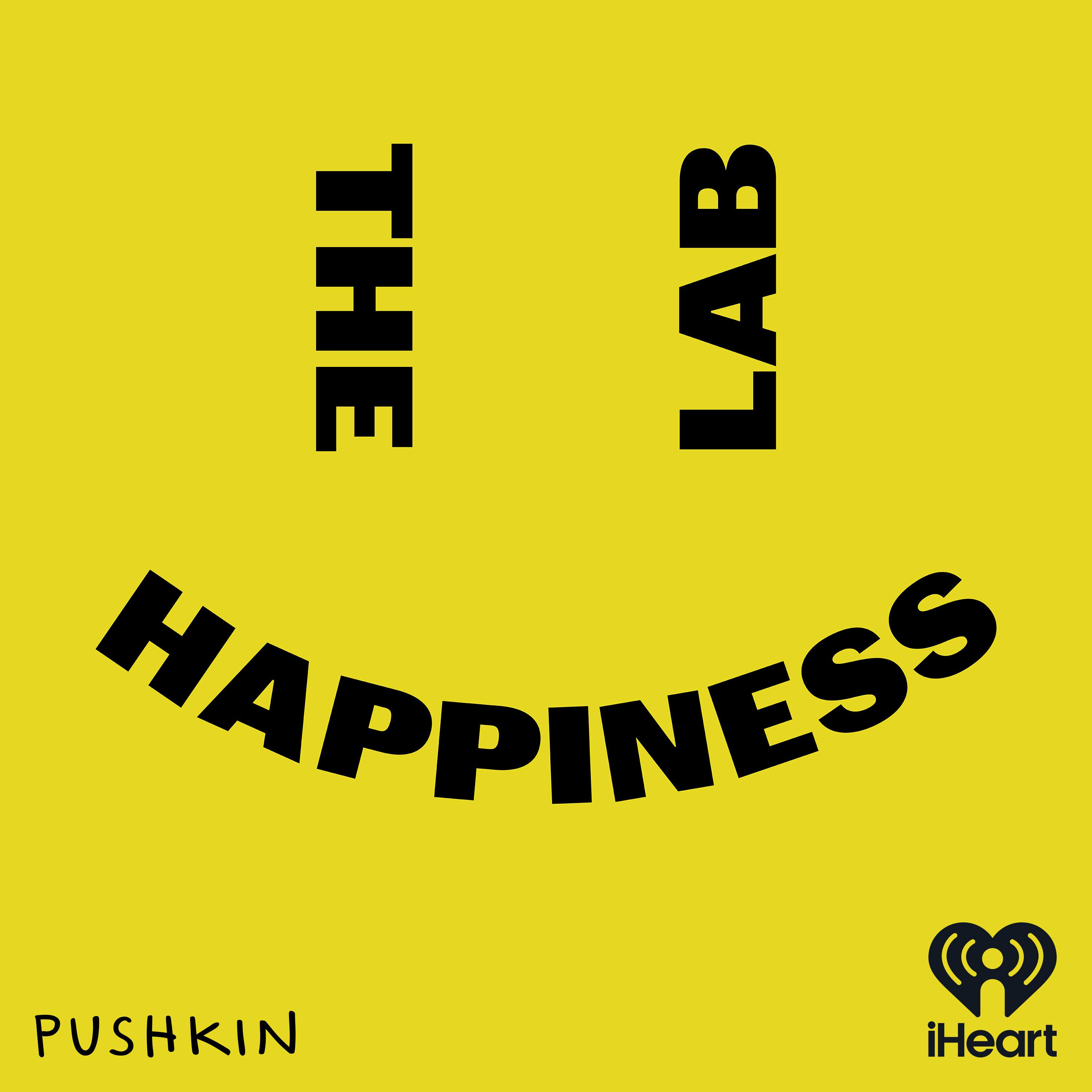
Tracks for the Journey
Tracks for the Journey will improve your well-being with practical insight and inspiration from progressive Christian spirituality, positive psychology, and justice ethics. Your host is Dr. Larry Payne, a minister, chaplain, and counselor with more than 45 years experience helping people with discoveries on their journey of life. He believes well-being is founded on balanced self-awareness, quality relationships, and active spirituality. Access all the resources of the Network at www.tracksforthejourney.com.
https://hopp.bio/tracksforthejourney
Tracks for the Journey
Make the Spirituality and Physicality Connection
This episode is only available to subscribers.
Tracks for the Journey Premium
A subscription unlocks 25+ subscriber-only premium episodes and new ones too!
Our physical experiences offer a gateway to profound spiritual encounters. Integrating our physicality and spirituality promotes holistic well-being. Body and Mind can flow in a dynamic unity. In this episode let’s explore the deep connections to our bodily experience and our spiritual life. The insights of Process Theology and modern neuroscience form a foundation for this life-giving integration. God is always present, inviting us to tune our unified awareness to make the connection.
Segments include:
Sit and don't wiggle
Bad vibes from ancient theology
Unity of Mind and Body
God ever-present
Linking Physicality with Spirituality
Subscribe to this podcast for only $5 per month to get a monthly bonus episode, access to exclusive subscriber-only episodes, and the POSTINGS weekly newsletter on Substack with more resources for well-being!
Subscribe at https://tracksforthejourney.buzzsprout.com
Enjoy the Youtube Channel at https://www.youtube.com/@tracksforthejourney77
I grew up attending a traditional Baptist church. I learned my body had to behave in clearly defined ways. I must sit and listen, not wiggle and talk. I had to stand for the singing but sit for the offertory instrumental music. If I had some spiritual business to do then I should walk to the front of the sanctuary and talk with the preacher. I had to dress properly and knew that was especially important for the girls to be modest so the guys wouldn’t think lusty thoughts about those pretty bodies. I knew people in other churches handled their bodies differently, like speaking in tongues, kneeling in the pew, smelling incense, or observing silence. All of those other practices were weird or even unbiblical. My physicality shaped my spirituality as more mental, more passive, and less experiential. But as an adult, is that the best way to encounter God?
I’m Larry Payne, the host of TFJ, a network dedicated to your well-being through progressive theology, positive psychology, and just communities. You can find more than 75 episodes on the website, TFJ.com. In this episode let’s explore the deep connections to our bodily experience and our spiritual life.
Traditional Christian theology built a high wall between the body and the soul. Jewish and Roman teachings portrayed a celibate person as one who could achieve greater spirituality. Paul carried on the theme, writing, “Now the works of the flesh are obvious: sexual immorality, impurity, debauchery, idolatry, sorcery,” then lists 10 more as a catalog of evil behavior. In his theology, “flesh” meant the nature of sin within each person, deeper than the physical actions. But in common teaching and subsequent doctrine, the body itself was impure, unholy, and the doorway to evil. Within 200 years of Christ, large numbers of men and women had left the pleasures of the world behind, including bathing, cooked food, comfortable homes, and sex, to live in rigorous spirituality far from the evil world. The teaching of Augustine later made it clear that all sexual activity comes from the sin of Adam, reoccurring in the impure lust of each partner.[1] The truth seemed clear: the body was evil and spirituality needed to subdue and escape it to be close to God.
But is that the full picture of our spirituality? The center of the faith is the incarnation, the body of Jesus becoming the place of God’s revelation. Fasting and feasting were both a part of his ministry. The Bible does list the sins of the flesh but in the next verses lists the embodied, loving actions of the Spirit, like gentleness, kindness, and self-control. The body can express good apparently. Paul goes on to teach that the human body is the new Temple of faith, supplanting the Jerusalem temple, and is to be treated with extra respect in a sacred way. This Sunday millions of Christians will physically taste the bread and the wine of Communion in a vivid divine encounter. Ruth Haley Barton in her book, Sacred Rhythms, shares “Knowing that God has chosen to make our bodies his dwelling place opens the door to remarkable opportunities for heightening our awareness of God's presence.”[2] The ultimate guidance toward a holistic view is found in another Pauline admonition, “Glorify God in your body.”[3]
Today’s worldview opens an opportunity to reintegrate our spirituality and our physicality. Modern psychology has shown that the traditional mind-body dualism is not valid. Human beings are a unity. If I watch a frightening movie in the safety of my home, my mind will still direct my body to a fear response with increased heart rate and muscle tension. If I have a GI issue and am given a placebo that has no medicinal effect, yet I believe with my mind that it will help, then my body will have a response that brings healing more effectively. We are a body-mind unity, like a coin with two sides.
Process Theology teaches that every experience has a similar mental-physical duality. The physical receives input from outside of the person. The mental receives input from the mind’s interpretations. Both sources are essential for every experience in every creature. For example, seeing photons of light through the eye must be interpreted by the mind’s memories and categories to distinguish between a star and a firefly to make the appropriate response, such as pointing to the star or reaching out to catch the firefly.
God works in the mental dimension of reality, what we often label as spirituality. To each experience God provides input, offering possibilities for response. These possibilities are options, not determinative of the choice. God’s input to each experience is as real as a memory, idea, emotion, or hope that our mind brings to the moment. With the example, God offers a positive aim, such as feeling awe at the gleam of a bright star billions of kilometers away or delight at the pulsing of the firefly in its mating dance. God is present and active in every experience a human can have. In Bruce Epperley’s words, “God’s relationship to the world is intimate and continuous rather than distant and discontinuous. God is not the ‘wholly other,’ but rather the ‘wholly present one,” whose existence cannot be fully contained by the world.”[4]
The combination of Process Theology and modern neuroscience promotes integration of our spiritual and physical lives.
Building on Ruth Barton’s insights, I encourage developing this vital unity in several ways. First, this understanding gives a new impetus to healthy habits and nutrition. Forty percent of American adults are obese. This limits a person’s lifespan and activities dramatically. Eating right and moving right are ways to honor the existence God has granted to each of us. Moving toward fresh vegetables and fruits makes a difference. Moving off the couch for 30 minutes of activity per day changes the way we feel and think. We can serve God in more ways when we live longer with a healthy body.
Second, we can listen to our body for signals to adjust our mind. A panic attack is a big signal that anxiety is overwhelming our body resources. It is a signal to examine how we are mentally coping with our situation. Some stressor is pushing us past our limit, and we must deal with it. For older adults, depression is the number one mental health issue. It’s a signal that some loss is pushing a person past the limits of emotional adjustment. God is in these signals! We should listen to the divine message and take action to get help from a change in mindset or lifestyle.
Third, we should make peace with our sexual context. It is basic that every human is a social creature and needs physical intimacy of some kind for maximum well-being. Intimacy is a broad category that spans from the nursing of a newborn to holding the hand of a senior adult on his final day. Intimacy includes the hugs, kisses, handshakes, hand holdings, cuddles, high-fives, massage, erotic touch, and intercourse that bind people together. Bodily pleasure is not evil, but instead a celebration of the goodness God has placed in the universe. In ways that are appropriate for our context and orientation, this physicality is a pathway for spirituality. A passionate kiss is just as spiritual as a heartfelt prayer. Each has a divine connection that promotes well-being.
Finally, we can pursue activities of the body that have deep spiritual bandwidth. We can kneel in prayer to submit to God. We can walk through the park to consider the ecology of nature and God’s provision for life. We can sit in yoga to meditate on the attributes of God. We can fix a meal to deliver to a person in need. We can listen to music, refinish furniture, weed a garden, or run a mile—all in a communion with the Spirit who is the source of all creativity.
With all these modalities, the key is awareness and intention. God is always present. We must tune our mind to make the connection. A crude example is a radio. We are always surrounded by radio waves but only if we turn to the channel can we hear the message. To walk along the beach might bring only sandy feet. Or the moment may inspire our devotion of never ceasing waves and the never ceasing love of God. The difference is our awareness to that inner prompting of the divine presence.
Here’s my confession: I talk to my rose bushes. They are alive to God just like I am. As I fertilize, prune, and feed, I share the connection between their fresh beauty and my own spiritual life in a communion outside the walls of a church. Maybe we both grow better with a little love! So, my connection to God has spread widely from the wooden pews of the Baptist church in my hometown. I’ve been in awe of mountains and felt the spray of waterfalls. I’ve listened to the songs of faith and the deep silence of a cathedral. The loving touch of family and the delight of hot chocolate on a cold morning have restored my soul. The ancient admonition is what we need for uniting our physicality with our spirituality, “Whatever you do, do everything for the glory of God.”[5]
[1] Paula Fredriksen, Ancient Christianities: the first five hundred years. Princeton University Press, 2024. P 168
[2] Ruth Haley Barton, Sacred Rhythms. IVP Books, 2006. P. 80
[3] 1 Corinthians 6:20
[4] Epperley, Guide, p 28
[5] 1 Corinthians 10:31 NRSVUE
Podcasts we love
Check out these other fine podcasts recommended by us, not an algorithm.

The Bible For Normal People
Peter Enns and Jared Byas
Hidden Brain
Hidden Brain, Shankar Vedantam
The Happiness Lab with Dr. Laurie Santos
Pushkin Industries